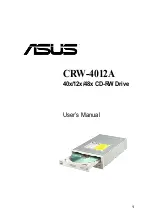
Number of
standard
Title
Scope
Comments
G5/4
Engineering recommen-
dation, planning levels for
harmonic voltage
distortion, and the
connection of non-linear
equipment to transmission
systems and distribution
networks in the United
Kingdom.
Setting planning levels for
harmonic voltage distortion
to be used in the process of
connecting non-linear
equipment. A process for
establishing individual
customer emission limits
based on these planning
levels is described.
G5/4 is a system level standard.
For 400 V, the voltage THD planning level is 5% at the PCC.
Limits for odd and even harmonics in 400 V systems are given
in Table 2 in the standard.
The standard describes a 3-stage assessment procedure for the
connection of non-linear equipment. The procedure aims at
balancing the level of detail required by the assessment process
with the degree of risk that the connection of particular
equipment results in unacceptable voltage harmonic distortion.
Compliance of a system containing VLT
®
frequency converters
depends on the specific topology and population of non-linear
loads. To meet the requirements of G5/4, employ VLT
®
Advanced Harmonic Filters AHF 005/AHF 010.
Table 2.1 Harmonics Mitigation Standards
2.3 Harmonic Mitigation
There are several ways of mitigating the harmonics caused
by the frequency converter 6-pulse rectifier, and they all
have their advantages and disadvantages.
Selecting the right solution depends on several factors:
•
The grid (background distortion, mains
unbalance, resonance, and type of supply -
transformer/generator).
•
Application (load profile, number of loads, and
load size).
•
Local/national requirements/regulations (for
example IEEE 519, IEC, and ER G5/4).
•
Total cost of ownership (for example initial cost,
efficiency, and maintenance).
IEC standards are harmonized by various countries or
supra-national organizations. All above-mentioned IEC
standards are harmonized in the European Union with the
prefix “EN”. For example, the European EN 61000-3-2 is the
same as IEC 61000-3-2. The situation is similar in Australia
and New Zealand, with the prefixes AS/NZS.
Categories of harmonic solutions:
•
Passive.
•
Active.
Passive solutions consist of capacitors, inductors, or a
combination of the 2 in different arrangements.
The simplest solution is to add inductors/reactors of
typically 3–5% in front of the frequency converter. This
added inductance reduces the number of harmonic
currents produced by the frequency converter. More
advanced passive solutions combine capacitors and
inductors in trap arrangement specially tuned to eliminate
harmonics starting from, for example, the 5
th
harmonic.
The active solutions determine the exact current that
cancels the harmonics present in the circuit and
synthesizes and injects that current into the system. Thus,
the active solution mitigates the real-time harmonic distur-
bances, which makes these solutions effective at any load
profile. For more details on the Danfoss active solutions,
refer to
VLT
®
Low Harmonic Drive Operating Instructions
and
VLT
®
Advanced Active Filter AAF 006 Operating Instructions
.
Introduction to Harmonics a...
Design Guide
MG80C502
Danfoss A/S © 10/2016 All rights reserved.
13
2
2
Summary of Contents for VLT AHF 005
Page 2: ......
















































